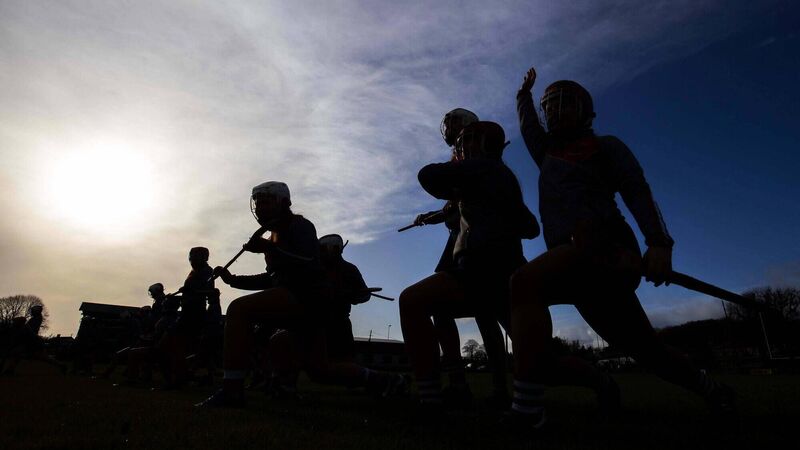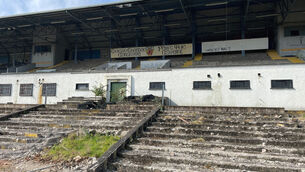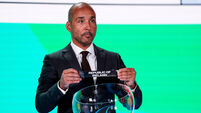Eimear Ryan: Closing the funding gender gap will raise the bar for our games

Since 2019, male inter-county players have been awarded sums of €1,000 to €2,400 by the government; there's no equivalent for female players, writes Eimear Ryan
You love to see it. The week gone by, Dublin camogie player Ali Twomey performed the sort of PR high-wire act that has become second nature to female GAA players whenever they are invited to the launch of an app, jersey, or sponsorship deal. They show up, gamely pose for photos, and then talk to the media about systemic inequalities and the frustrations of being a female inter-county player.
Never mind what the presser is ostensibly about; the goal is to maximise the platform to talk about bread and butter issues.
And Twomey did. At the launch of an AIG virtual gym for club players in Dublin, she expounded on the lack of expenses for female players compared to their male counterparts: no mileage, no consistency when it comes to food or gear, and — perhaps most gallingly — not a sniff of a government grant.
Since 2019, male inter-county players have been awarded sums of €1,000 to €2,400 by the government, depending on how far they get in championship; there’s no equivalent of this state-sponsored bounty for camogie players or ladies footballers. Twomey memorably characterised this omission as “a kick in the teeth”.
I had made a lot of assumptions about the conditions of Dublin’s female players.
That AIG logo emblazoned across all four jerseys — hurling, football, camogie, and ladies football — projects a sense of equity, of resources shared equally. It was a model for other counties to emulate, I thought. I also assumed that Dublin players would escape much of the travel costs that other inter-county players, who might have to leave their county of origin for work or study, incur on a weekly basis.
But as Twomey pointed out, before the pandemic, she paid €100 a month just for tolls to get to training. None of that can be claimed back.
Twomey’s words reminded me of a similar interview with Amy O’Connor at the launch of the National League a couple of years ago, in which she lamented the fact that the multi-All Ireland-winning Cork camogie setup had to fundraise for a short team holiday in Spain, while the Cork hurlers — markedly less successful — got a free junket to the Fenway Classic. “It would make your blood boil,” said O’Connor cheerfully. There have been many more besides.
It always delights me and makes me wince in equal measure, these frank admissions from high-performing female players. Doing their promo duty, smiling for the camera, then talking about kicks in the teeth and blood boiling.
It speaks to a very particular kind of resilience: how to keep turning up, year after year, to a sport that you love but which is also plainly unfair. How to manage your justifiable anger.
When writing an essay years ago about my experience of being involved with the Tipp camogie panel, I wrote — erroneously now, I think — that “expenses were plentiful”. I’d assumed, given the amount of free gear that was handed to us, that there was money in a kitty somewhere for players’ expenses.
Personally, I spent a fairly modest amount — a tenner a week — getting buses and Luases out of Dublin city centre to meet my teammate Deirdre at the Red Cow roundabout for lifts to Thurles, but I wasn’t keeping those receipts. I can’t remember asking Deirdre if she got any reimbursement for the weekly tank of petrol she would have used driving from Dublin to Tipp for training. I doubt she did.
It’s true that it’s not so long ago that inter-county hurlers and footballers received little in the way of financial supports. It’s very much a feature of the last 20 years or so.
But as expectations and professional standards for male players rose, so too did supports to help them achieve the best in terms of fitness, nutrition, and lifestyle. The women’s codes have had a similar steep rise in professional standards, particularly over the past decade — but they haven’t had that proportional increase in resources. This gap is becoming increasingly difficult for female players to manage, and allows for frustrations to seep in.
Trying to have these debates online does little (astonishingly enough) to abate said frustrations. The men’s game is profitable, that’s why they get expenses, goes one version of the argument.
People are more interested in the men’s games, that’s why they get more media coverage and funding, goes another. But trying to apply free-market values to our national games, which are (a) amateur and (b) heavily subsidised by the government, is questionable.
While the women’s codes need funding for a wide range of initiatives, relieving players of the financial burden of representing their county is arguably the simplest single stroke you could make to improve the conditions of female inter-county players. The oft-floated tax credit is not a bad idea either. If there can be an artists’ exemption, why not one for Gaelic players?
I can’t speak for them, but I suspect that female inter-county players don’t really mind where the money for expenses comes from — gate receipts, county boards, or government grants — as long as they are relieved of the financial stress incurred by simply excelling at their sport.
The WGPA’s ‘Levelling the Field’ report from last October shone a light on this issue, revealing that some players were spending up to €200 a week to travel to training, but only 7% reported being in receipt of travel expenses.
The majority also paid for their own physio and gym fees. Basic things, but think of the mental space and stress that would be freed up if these things were taken care of; mental space that could then be focused on sport.
Money can’t buy talent, some might say — and that is true, but it can buy standards. It can buy excellence.
A funding gulf has created a crisis in men’s football, and the penny is dropping for many commentators that actually, resources do impact on quality and results.
Better supports and resources for female players will raise the bar and lead to more competitive championships and more exciting games.
And that way, we’re all winners.








